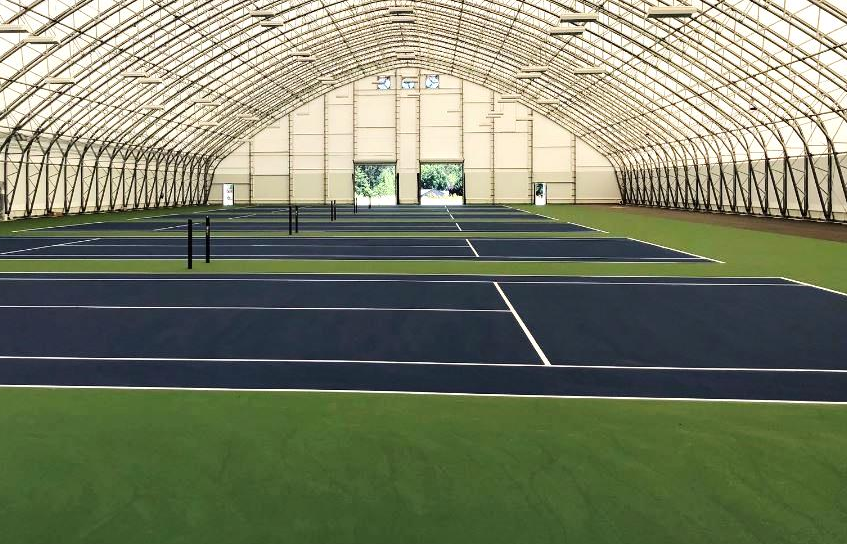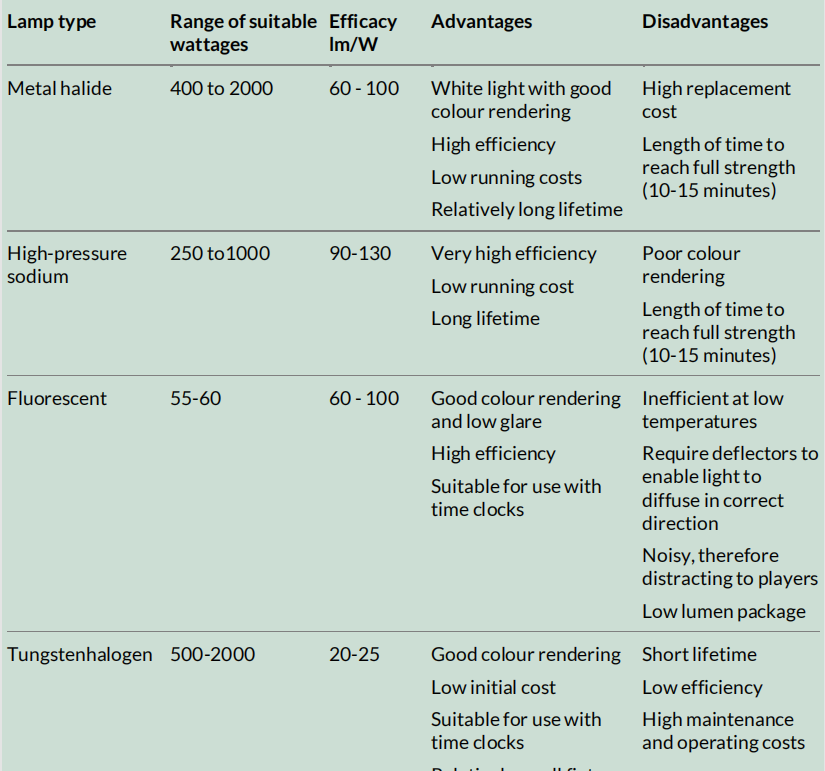Indoor Led Tennis Court Lighting Standards & Installation Recommendations
Indoor Led Tennis Court Lighting Standards & Recommendations

1. Indoor Led Tennis Court Lighting Standards & requirements

Table 7. Summary of the lighting criteria for indoor courts. The above average horizontal illuminances are maintained values.
2. Indoor Led Tennis Court Lighting Standards & Installation
Recommended systems of lighting use luminaires that are mounted parallel to the sidelines and outside the PPA. No luminaires should be positioned in the part of the ceiling which is directly above the area limited by the rectangle of the marked area extended to the full depth of the run back behind the base lines.
The interior surfaces of indoor courts can help to make the ball more visible against them however, the right choice of colour and reflectance can also assist with perceived quality of the Indoor Led Tennis Court Lighting installation. Background colours of blue or green are preferable and should be as uniform as possible.
Glare from windows – positioning windows at low level alongside the court and not behind the server reduces this possibility.
LIGHT SOURCES
Many types and lamps available today can be used for the Indoor Led Tennis Court Lighting. The most appropriate lamps in common usage are described below, including the range of lamp types and wattages and efficacies. Efficacy describes the ratio between the light output (lumens) and power input (watts).

Table 8. Summary of lamps in common usage.
It is important to choose the lamp wattage in relation to the mounting height in order to not create excessive glare for players and spectators.
MAINTENANCE AND COST OF OWNERSHIP
A new lighting system represents a considerable investment. Once this investment has been made the system should be maintained to ensure its performance over many years.
As well as the installation costs (equipment and labour), a Indoor Led Tennis Court Lighting system will have ongoing variable costs that it will attract over a number of years. This reviewed as part of the design, elements of such an analysis include:
• Initial system cost excluding lamps.
• Cost of lamps.
• Estimated operational hours per year.
• Load of system in kW (including gear losses).
• Electricity cost per kW/ hour.
• Number of lamp replacements over the assessment period.
The light emitted by lamps depreciates over time as the components wear. However it is very important to note that efficiency is also reduced by dirt. Regular maintenance of lamps and fittings includes cleaning and is necessary to ensure that the installation continues to meet the original design specifications as efficiently and economically as possible.
Maintenance comprises cleaning, safety testing, the regular replacement of lamps and other components with a limited service life, as well as the timely replacement of worn or damaged parts.
Maintenance contributes to efficient energy consumption and prevents unnecessary costs. It should be carried out at least once a year or at the latest when the average illuminance has fallen to the average specified minimum illuminance.
Lamps can be replaced individually or all the lamps in an installation can be replaced at the same time. Apart from lamps that fail at an early stage it is best to replace all the lamps at the same time.
This prevents large differences in light characteristics between old and new lamps. Individual lamp replacement will be necessary if the contribution of the light source in question is indispensable such as in outdoor installations with a small number of lamps or for emergency and safety lighting.
